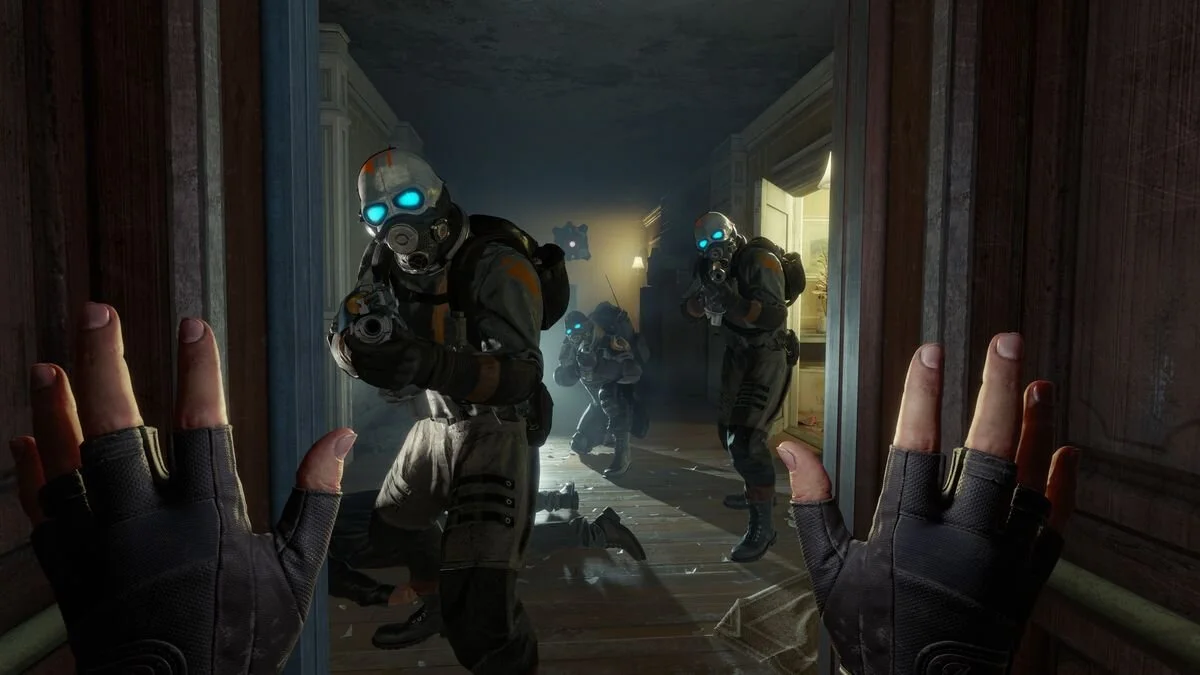VGA QUESTION ZONE: Tracy Harwood and Ben Grussi
Tracy G. Harwood (@tgharwood) and Ben Grussi are the co-authors of Pioneers in Machinima: The Grassroots of Virtual Production (Vernon Press), which is currently available for pre-order to be released in September 2021.
How would you describe machinima to someone with no knowledge of machinima whatsoever?
There are really now three interlinked descriptions –
Firstly, and most importantly and historically, machinima is the ability to use a 3D virtual environment, typically a computer game engine, as the foundation for creating original works such as films and digital artworks. It’s the process of generating footage in real-time through game-play, although the creative process often requires editing tools and techniques. The creative work generated generally goes completely contrary to what the original game was intended to do, such as a fantasy, a driving game or a first person shooter, to tell a new story. It is a practice that was borne out of online game-based community practices.
Secondly, there is now a professional aspect to machinima. This isn’t called machinima as such, which is recognized as the indie term, but has become known as ‘virtual production’. VP is the same use of game mechanics but it is being used by professional production studios rather than indies and content creators, and is exemplified in the development of ‘The Mandalorian’ series for example. Of course, COVID has influenced the rapid adoption of machinima game-based creative practices which are now used across a broad range of virtual production contexts.
Thirdly, the use of the term ‘machinima’ became synonymous with Machinima Inc.’s YouTube network channel partnership strategy. In fact, the NCP strategy originated with Machinima.com’s early work, before it was bought out and established as the US organization which mainstreamed the term. Machinima.com was the original community website that formed to support the original creators using game-based mechanics in 2000. Nonetheless, machinima as a term has been somewhat overshadowed by the rise and fall of its corporate adopter, which ultimately became known simply as a channel for YouTuber content rather than game-based creative practice per se.
With that out of the way, can you tell us about your backgrounds as scholars and how Pioneers in Machinima: The Grassroots of Virtual Production came into being?
As the director of the 2007 European Machinima Festival and author of numerous academic publications on machinima, Tracy was originally approached by the publisher, Vernon Press, in 2016 and asked about the potential for a new book. After some reflection on the large number of academic articles that have been written about machinima over the years, she decided to take a different approach and talked to Hugh Hancock, the founder of Machinima.com in 2000, about the idea for Pioneers. It is predicated on the historical impact of machinima from the perspective of some key creative works, creators, activities and events – the book was originally going to be called ‘Machinima: Socio-Cultural Disturbance’. Hugh was going to be a main contributor. As time progressed, however, events overtook the book’s writing. Hugh tragically died in early 2018 and the writing project was shelved as a consequence. By early 2019, faced with a long period of time when writing could become a focus again because of COVID restrictions on other work commitments, Tracy contacted Ben to discuss a potential collaboration. Ben had been the original community manager for Machinima.com, had also been part of the community prior to the website’s launch and, crucially, had collected and documented all key events and machinima films released from its very beginning to mid-2005.
Ben is not an academic but agreed to be part of the project. Ten months later, the book was submitted for review. Both us have connections from the earliest days of machinima on whose collective memories we have called in writing the text. The book is of course dedicated to the memory of Hugh, but it is also dedicated to all those early pioneers, many of whom have contributed to the book through interviews on the emergence of machinima and virtual production as a game-based creative practice.
How do you situate machinima in relation to the term "contemporary art"?
Machinima can be described as distinct type of digital artwork, as we’ve described above. If contemporary art is a time-based thing, depending on who you ask (eg., 1947 Institute of Contemporary Art UK or 1977 New Museum of Contemporary Art, New York), then we can pinpoint exactly when machinima emerged: 1996 with the film by The Rangers called ‘Diary of a Camper’!
If we use the descriptor ‘contemporary’ as reflecting latest game-based technologies, then machinima is certainly a rapidly developing creative practice context for digital artwork. Games increasingly use sophisticated computer graphics, real-time processing capability, artificial intelligence, cinematic animations and assets (such as characters) which have very high visual fidelity – for example, the 2019 remake of ‘The Lion King’ (directed by Jon Favreau who also directs ‘The Mandalorian’) used similar graphics but its fidelity was such that its creators described it as the first ‘real life animation’ ever made! Methods of interacting with games are increasingly using trackers and sensors – virtual and augmented reality tend to be visually driven techniques for engaging with games – but we will shortly see somatosensory devices that track other aspects of gameplay response based on emotion and movement.
It is important to note that machinima is quite different to CGI-based art (computer graphics), which uses animation techniques for the basis of creative practice. Machinima represents a diverse array of creative practice, however, and whilst some have referred to it as remix and appropriation cultural practice, reflecting that game mechanics may be modified to achieve end results, with some early works even being the result of hacked game content, machinima is generally a means to create original work.
What is an environment that video games are not normally in that you would find fun if they were?
A really interesting question because games these days can be used for pretty much anything you’d like to use them for, from entertainment to health to training and work. Potentially fun but probably very hard to do is that they might be used in supporting the creative process for machinima developments – they’re not usually about that at all! Seriously though, emergent areas are in augmented reality experiences. Think Pokemon Go! and similar, where you are out and about doing and finding things, Live Action Role Playing (LARPing), but with increasingly sophisticated layers of virtual experiences overlaid. Of course, we need more robust and reliable tech for this to evolve but once it does, then we will see some very interesting and creative story-based and interactive experiences emerge. We’re already seeing some of that come to fruition, where digital arts practitioners are using game technologies to enhance theatrical or theme-park experiences, but these are just the beginning and certainly don’t reflect the massively untapped independent creative community that has always been at the heart of machinima.
What games have directly inspired your current work?
Machinima reflects a passion in both games, film and literature as creative formats so to pin down a few games as the inspiration for our work is virtually impossible to do!
Are you currently playing any games, and if so what are they?
Half Life Alyx
Firewatch
Current games that are interesting for Tracy actually reflect the different types of technologies that are evolving, Unreal Engine (eg., photorealism, ray tracing, metahumans), Half Life Alyx (virtual reality storytelling) but her role as a co-host for the And Now For Something Completely Machinima podcast (www.completelymachinima.com) means she explores many different games and machinima works.
For Ben, indie games such as Firewatch, Walden, the Game and Stardew Valley are current interests, reflecting the diversity of games that are now being developed (each can be downloaded from Steam). Ben is also contributing to the Completely Machinima podcast on games and machinima from the archives.





